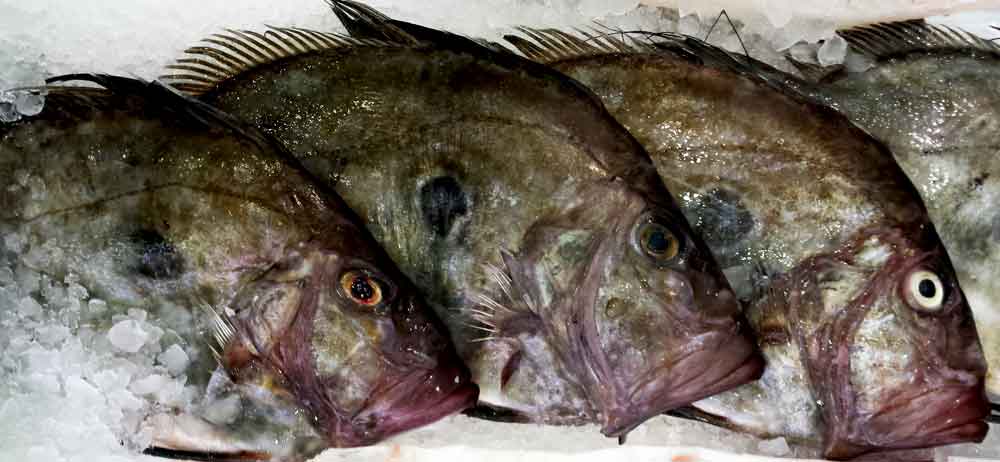John Dory is a very tasty fish with a firm, meaty white flesh producing boneless fillets. It can often be found on restaurant menus as it is very flexible ingredient and chefs can team it up with a wide variety of ingredients and flavours. John Dory pan-fried or grilled will work well with Mediterranean flavours and peppery sauces. Many people liken it to a sole or turbot.
John Dory AKA St Peter’s Fish
John Dory is also called “St Peter’s fish” (sometimes “St. Pierre”, or “Peter’s Fish”). Legend would have it that the distinctive dark spot on the side of the fish is the saints thumb print. The origins of the english name John Dory is thought to derive from the French jaune for yellow and doré which means gilded or golden.
Cooking John Dory
John Dory is quite an unusual looking fish with a very large head and quite a few sharp spines particularly on its dorsal fin. It looks impressive cooked whole or if you want it off the bone take care when filleting. Alternatively we will be happy to do this for you in the shop. The head and bones can be used to make a good fish stock.
If you are cooking a large fish you can allow 1 fillet per person. (A small John Dory might weigh 300g, but a larger size can be 2kg.)
To Fry Fillets:
Dab you fillets dry with a paper towel
Sprinkle flour onto a large plate then season well with some chunky sea salt and freshly ground black pepper. Dust the John Dory in the seasoned flour on both sides.
Heat butter (30g) in a frying pan over a medium heat until it has foam and is just turning colour. Fry the John Dory for two to three minutes on each side or until the fish is just cooked through. It is done when the flesh starts to flake and becomes firm, white and opaque. As with all fish, it’s important not to overcook so err on the side of caution – It will carry on cooking when removed from pan.
For a finishing sauce add about 30g butter and the juice of a half lemon to the pan and cook for another minute. Pour over the individual fillets and serve right away.
To Grill/Bake Whole:
Pre heat your oven at 220C/gas mark 7.
Rinse and pat dry your fish with a kitchen towel. Place in a roasting tin large enough for the fish to lie flat.
Drizzle generously with olive oil. Season the fish well on both sides (and inside) with some sea salt and freshly ground black pepper.
Cut a lemon into eight or so segments. Place these inside and around the fish. You can also add a few bay leaves for extra depth of flavour.
Roast for 8-10 minutes – more or less depending on the size of your particular fish. Once the flesh is firm to the touch, opaque, and the flesh comes easily away from the bone its done. Remove right away.
Transfer it to a warmed serving dish drizzle over with the cooking juices. Serve right away.






